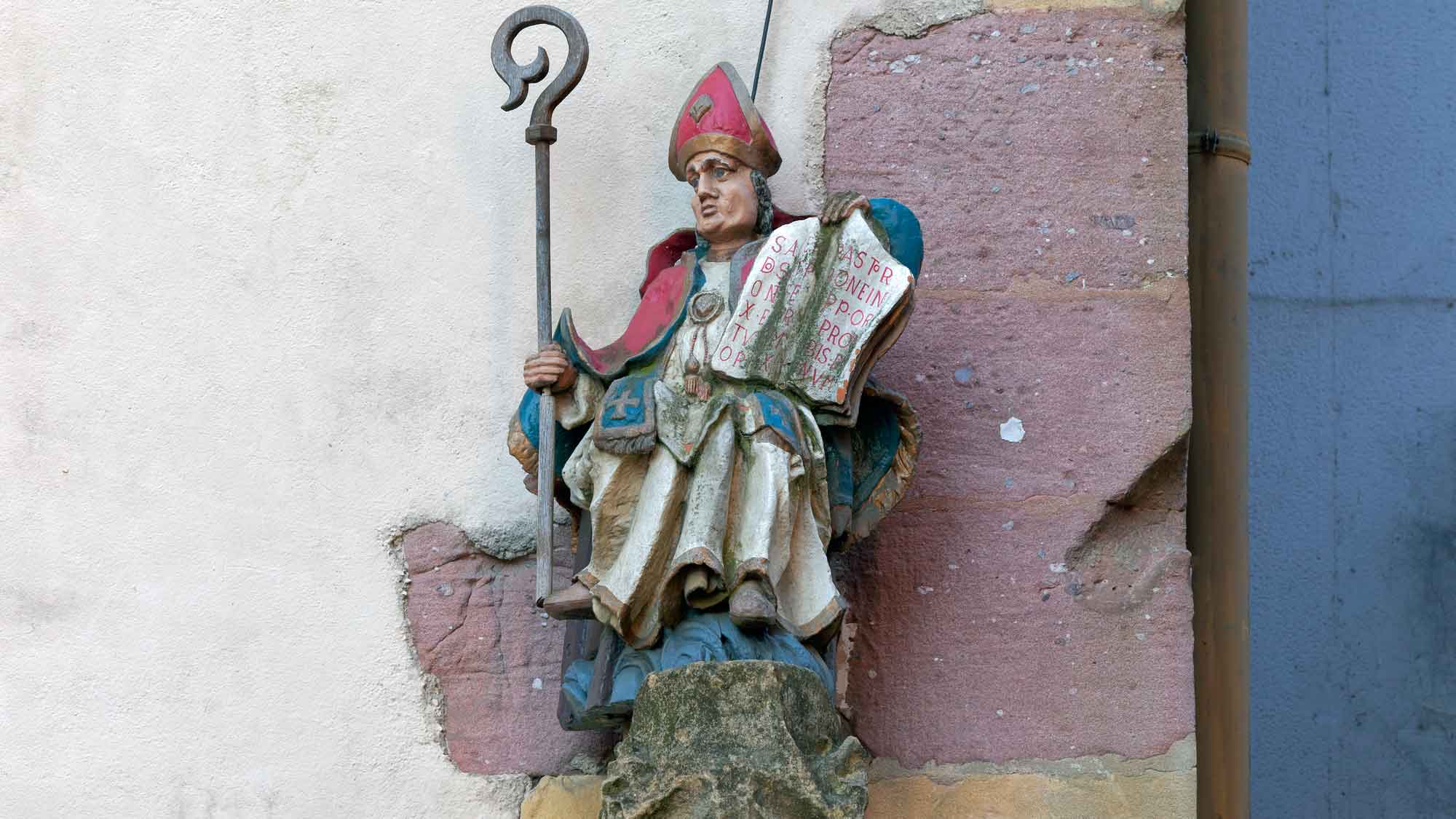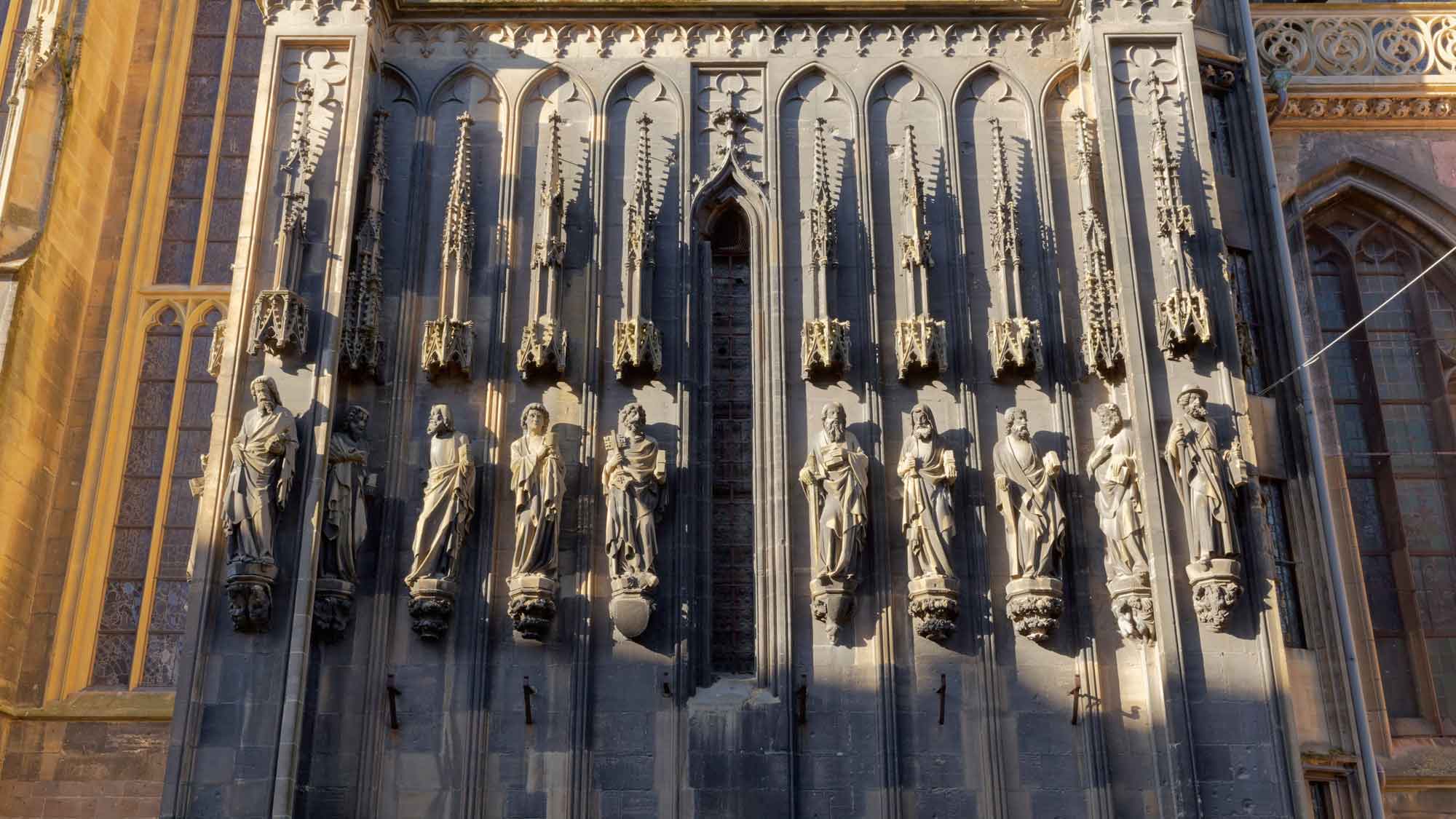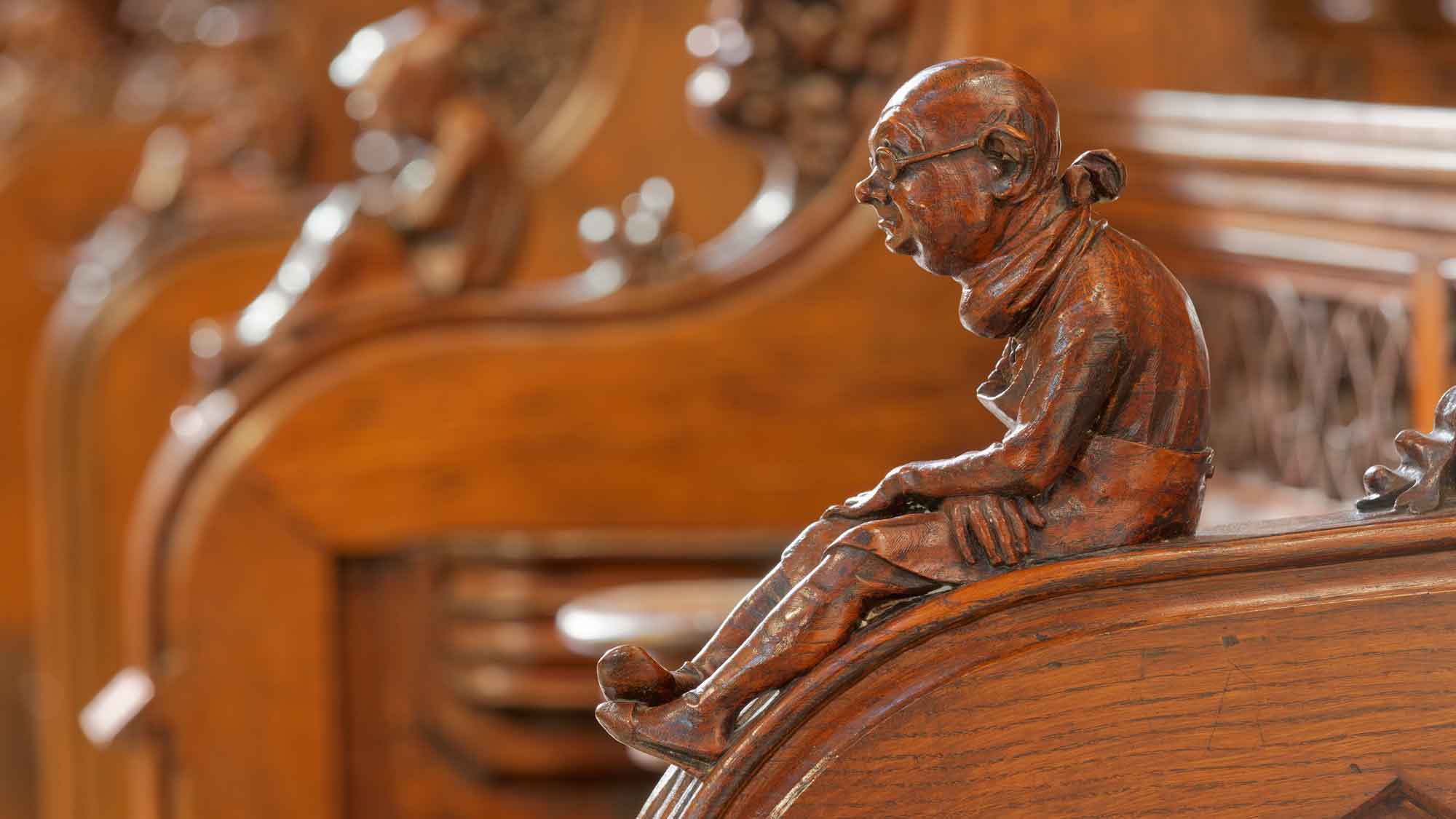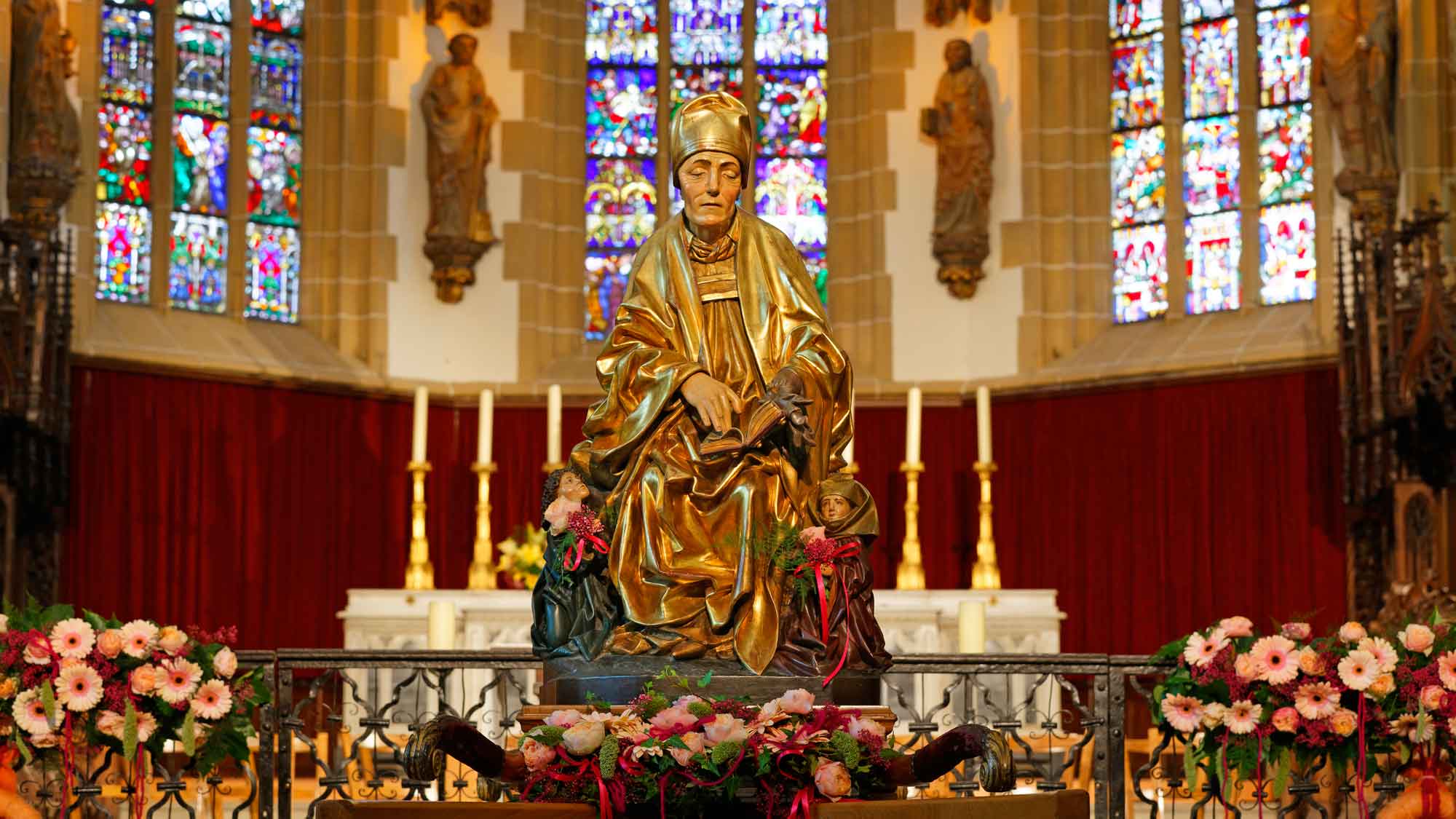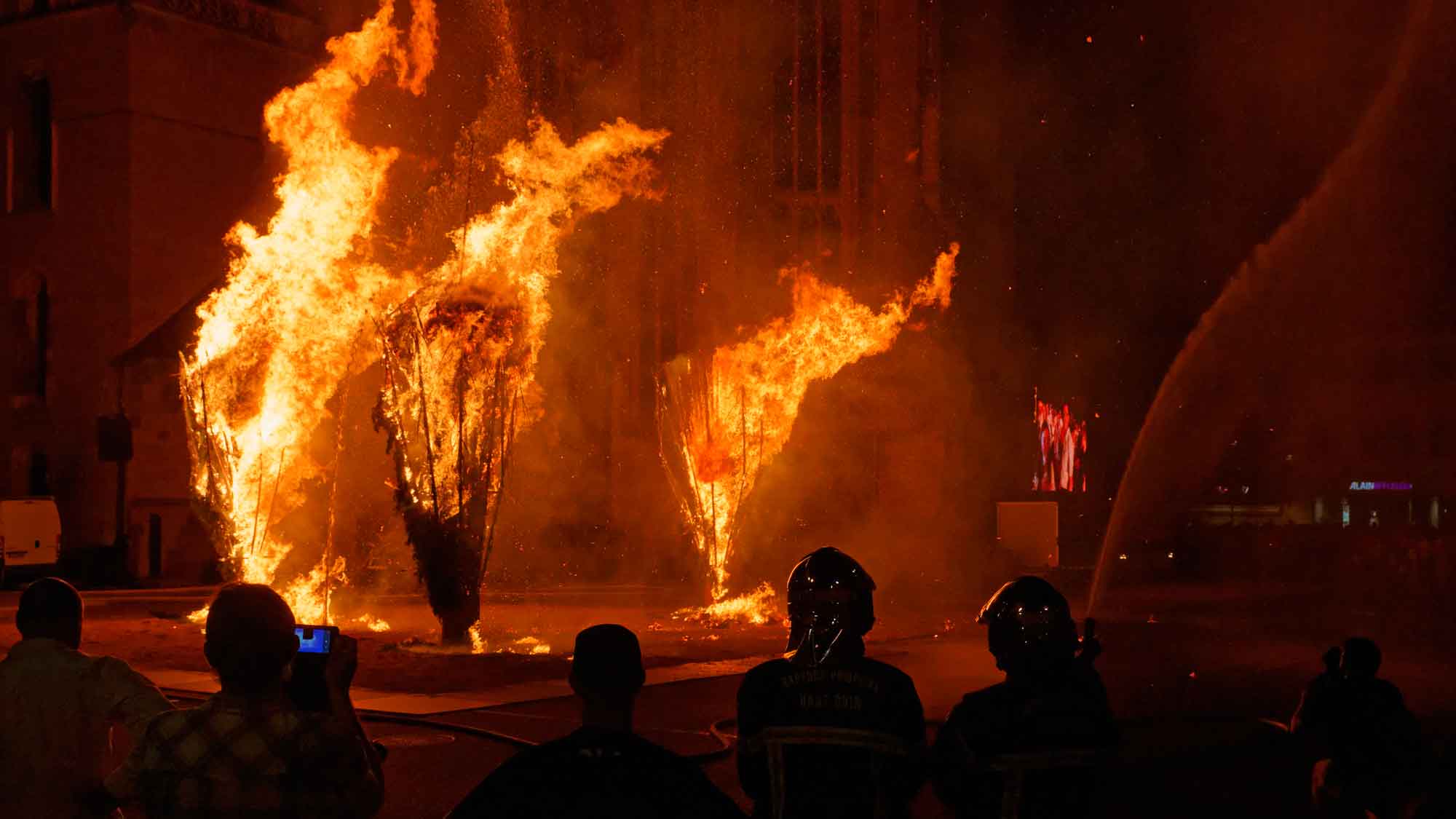Theobaldus Minster in the firelight
A place full of legends is Thann, the small town at the entrance to the Thur valley. Visible from a distance, the tower of Theobaldusmünster reminds that Thann was once a famous place of pilgrimage. The city was founded and pilgrimage began in the 13th century. Various legends have survived; they tell of the miraculous way that Bishop Theobaldus of Gubbio’s thumb relic came here. This is said to have caused countless miracles here and subsequently attracted more and more pilgrims and shopkeepers, so that the forest had to be cleared and the city of Thann was created. Above all, however, it was probably a road customs office controlled by a castle on this old Roman road, which formed an important connection for traffic here via the Col de Bussang, the reason for the founding of the city. A chapel was soon replaced by a church, until in the late 15th century the famous Gothic building of Theobaldusmünster with the finely chased tower was completed. The ‹Crémation des trois sapins› in Thann with its three blazing firs takes place annually on June 30 in connection with this legend. In folklore terms the festival belongs to the bonfire, but there is an interesting parallel to the ‹Festa dei Ceri› in Gubbio, the place where Saint Theobald died. The ‹Crémation des trois sapins› is old tradition in any case, as it is already mentioned in documents from the 15th and 16th centuries. Relations with Gubbio are very well maintained in Thann, and a delegation from Italy keeps coming back to the

